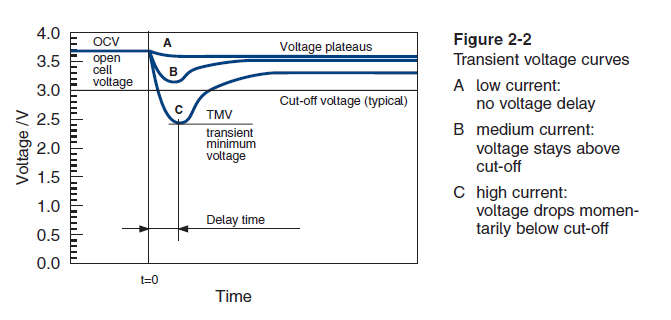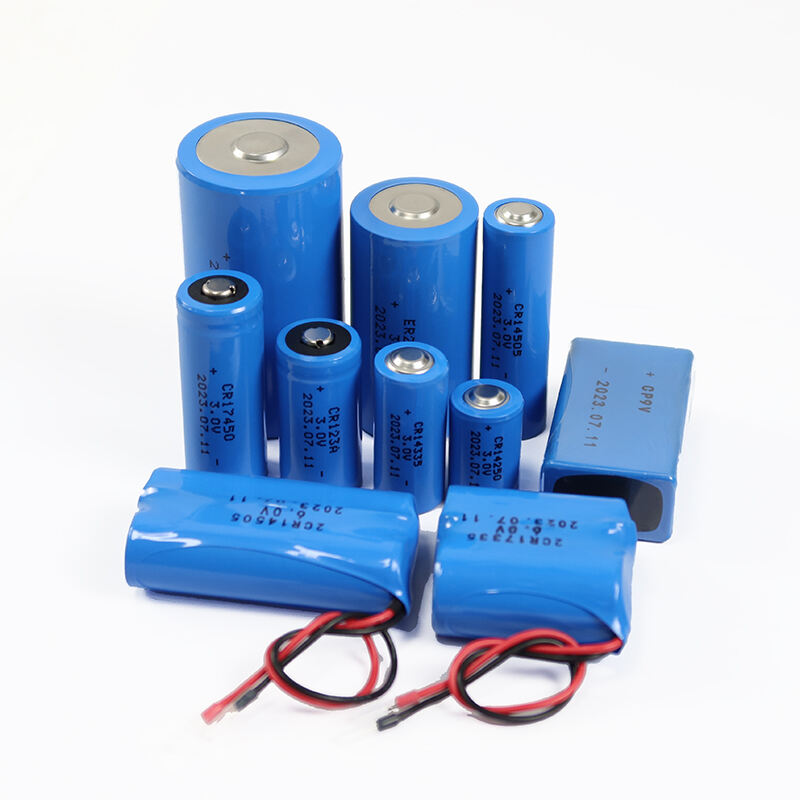Новости
Инструкции и меры предосторожности по использованию литий-тионилхлоридных батарей
Литиевые батареи с номером модели, начинающимся с ER, являются литий-тиониловыми хлоридными (Li/SOCl2) батареями, которые классифицируются как литиевые первичные батареи в соответствии с международными стандартами батарей. Литиевые первичные батареи представляют собой новый тип высокоэнергетических и экологически чистых батарей с литиевым металлом в качестве отрицательного электрода. Это не перезаряжаемые батареи.
1. Литиевые первичные батареи не перезаряжаемые
Прямое зарядка литиевых первичных батарей приведет к взрыву батареи. Вероятность взрыва батареи напрямую связана с временем зарядки и током. Зарядка от 220В приведет к мгновенному взрыву. При зарядке от 12В постоянного тока батарея взорвется в течение нескольких минут. При зарядке от 5В постоянного тока без внешних защитных компонентов ток зарядки может достигать около 50мА, и батарея взорвется через несколько часов.
В случае плавающей зарядки напряжением 5В в цепи рекомендуется, чтобы клиенты добавили диоды и другие защитные меры в цепь, чтобы контролировать ток зарядки ниже 10µA.
Безопасно контролировать ток зарядки литиевых первичных батарей ниже 10µA.
2. Предотвратить принудительный разряд
Когда несколько батарей используются последовательно, если в последовательной батарее используются другие модели или использованные батареи, некоторые батареи будут испытывать принудительную разрядку (перезарядка). Из-за неравномерности емкости батарей некоторые батареи будут заряжаться на позднем этапе разрядки, что может привести к авариям с батареями.
Чтобы предотвратить возникновение зарядки, клиентам рекомендуется не собирать батареи для использования.
Если вы хотите использовать одну батарею в комбинации, пожалуйста, свяжитесь с техниками, которые предоставят вам решения по сборке и услуги по проектированию сборки.
3. Высокая температура
Когда температура окружающей среды литиевой первичной батареи превышает 100°C, батарея взорвется, поэтому следует обратить внимание на контроль времени и температуры сварки во время сварки.
4. Гистерезис и моменты внимания
AS литий тионилхлоридные батареи иметь характеристику, а именно, гистерезис напряжения, который часто заставляет клиентов использовать батарею для обеспечения высокого тока, и напряжение нагрузки оказывается ниже минимального предела напряжения клиента, что приводит к плохой работе оборудования. Учитывая, что многие клиенты недооценивают это, нам необходимо подробно объяснить гистерезисные характеристики батареи.

Класс A: При низких токах, хотя батарея и пассивирована, нагрузка не будет значительно изменяться при использовании. В качестве примера возьмем ER14250, когда ток ниже 1 мА, у батареи не будет явного гистерезиса (снижения напряжения).
Категория B: При средних токах, если батарея пассивирована, но нагрузка батареи все еще может поддерживаться выше предельного напряжения.
В качестве примера возьмем батарею ER14250, когда ток ниже 4 мА, напряжение пассивированной батареи будет снижаться, но, как правило, не упадет ниже 2,8 В.
Категория C: При высоких токах, если батарея пассивирована, нагрузка на батарею может легко упасть ниже порогового напряжения, что приведет к неправильной работе устройства. Например, при использовании батареи ER14250, когда ток превышает 10 мА. Если пассивирована, нагрузка упадет ниже порогового напряжения (Cut-offVoltage).
Поэтому клиентам необходимо полностью понять явление гистерезиса и принять соответствующие меры для снижения его влияния. В ходе фактического использования предлагаются следующие рекомендации:
1. Учитывайте размер нагрузки, условия использования и другие факторы на этапе проектирования, и выбирайте модель батареи для использования при средних или низких токах.
2. Время хранения готовой батареи не должно превышать полгода. Рекомендуется активировать батарею после более чем полугода.
3. Если батарея установлена на устройстве и имеет микропотребление в микроамперах, явление пассивации батареи замедляется. Однако, если проектный ток превышает максимальный рабочий ток батареи, рекомендуется рассмотреть возможность добавления конденсаторов на этапе проектирования для снижения падения напряжения батареи.

V. Предостережения при использовании
1. Короткое замыкание строго запрещено, и зарядка высоким током строго запрещена.
2. Пользователям строго запрещено самостоятельно комбинировать батареи.
3. Переразряд, сжатие и сжигание батарей строго запрещены.
4. Долговременное использование или нагрев вне допустимого температурного диапазона строго запрещены (батареи представляют опасность при превышении 100°C).
5. Строго проверяйте внешнюю упаковку перед использованием. Если упаковка повреждена, выясните причину и не используйте ее без необходимости. Когда упакованные батареи рассыпаны, своевременно отсортируйте их, запечатайте рассыпанные батареи и уведомите поставщика.
6. Строго запрещено смешивать и использовать батареи разных серий и разных спецификаций последовательно.
7. Нельзя произвольно паять на верхней части положительных и отрицательных полюсов батареи, а пайка на выводном листе должна быть завершена в течение 5 секунд.
8. Во время работы батарея не может быть разбросана или уронена, чтобы избежать короткого замыкания батареи.
9. После разряда батареи до предельного напряжения строго запрещено продолжать ее использование, и батарею нельзя замачивать в воде.
10. Использованные батареи должны быть помечены и утилизированы вовремя, и не должны храниться произвольно.
11. При снятии изоляции и сварке проводов не следует одновременно снимать изоляцию с положительных и отрицательных проводов, и не следует соединять положительные и отрицательные провода металлическими предметами, чтобы избежать короткого замыкания батареи.
12. При упаковке и хранении избыточных батарей с производственной линии батареи должны быть упакованы в оригинальную упаковку, аккуратно уложены и не замыкаться друг на друга.
13. Избыточные батареи с производственной линии должны храниться в оригинальной упаковке. Рекомендуется хранить батарею в среде с температурой <25 градусов и влажностью <70%, чтобы избежать длительного хранения в жестких условиях, что может привести к ржавчине и коррозии батареи и вызвать утечку.
14. Требования к установке и использованию батареи: положительный полюс батарейной ячейки должен быть расположен горизонтально и вверх. Когда положительный полюс направлен вниз, часть емкости будет недоступна, и фактический коэффициент использования составляет только около 80% от нормального значения.
15. Держите батарею подальше от детей, чтобы избежать травм.
16. Утилизированные батареи не могут быть уничтожены самостоятельно и должны обрабатываться в соответствии с правилами местного отдела охраны окружающей среды.
Вышеизложенные меры предосторожности касаются использования и эксплуатации литиевых первичных батарей, которые здесь разъясняются.


